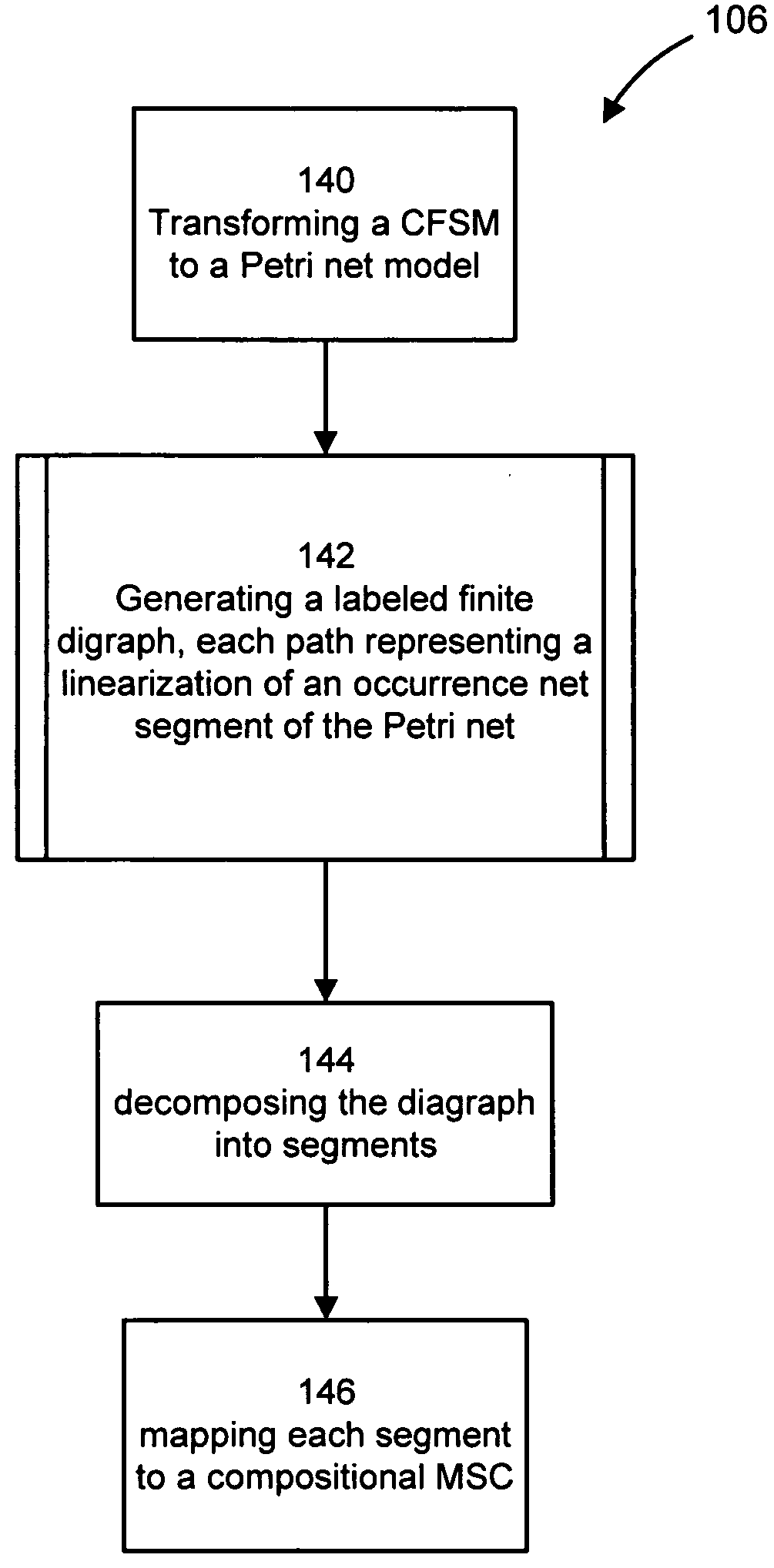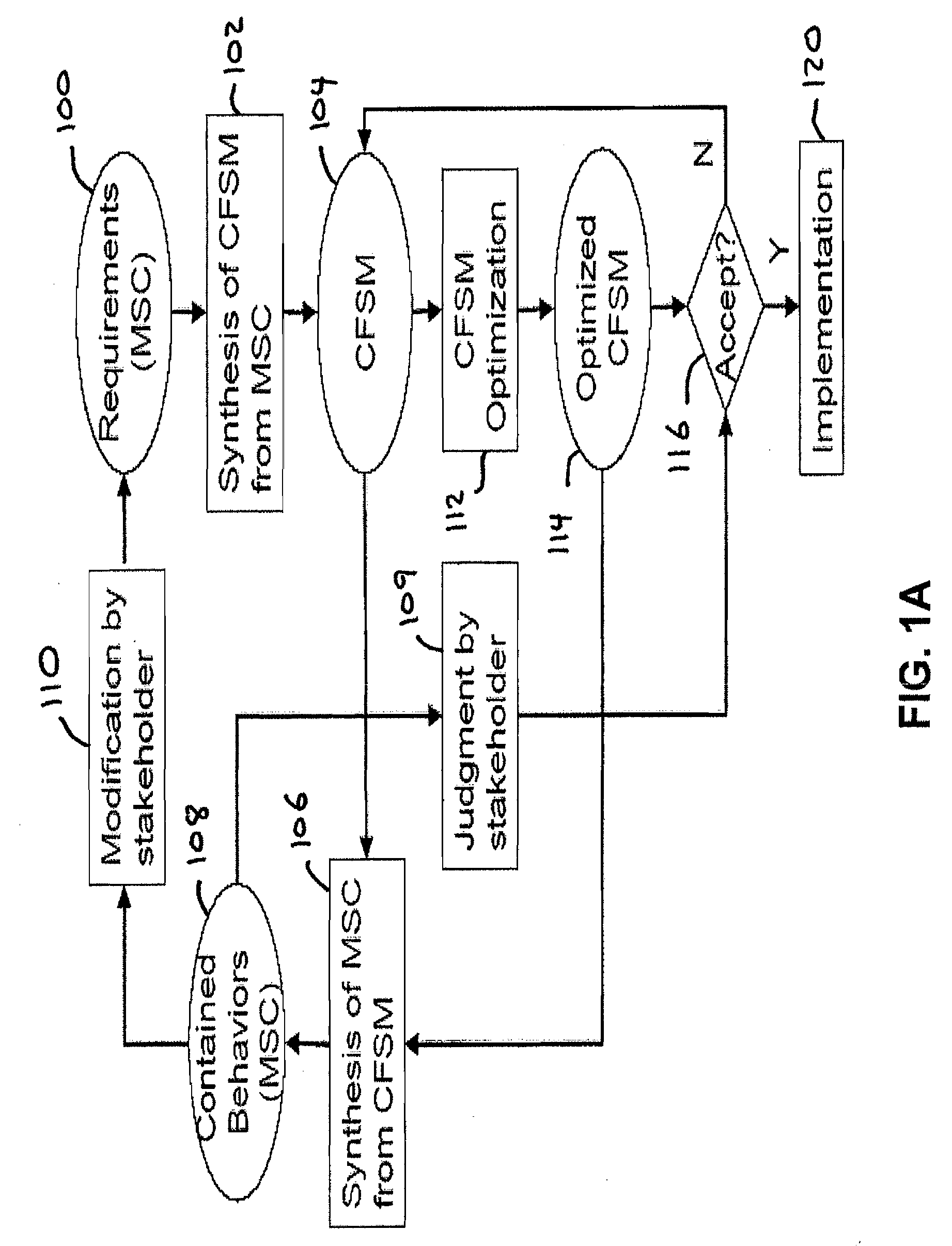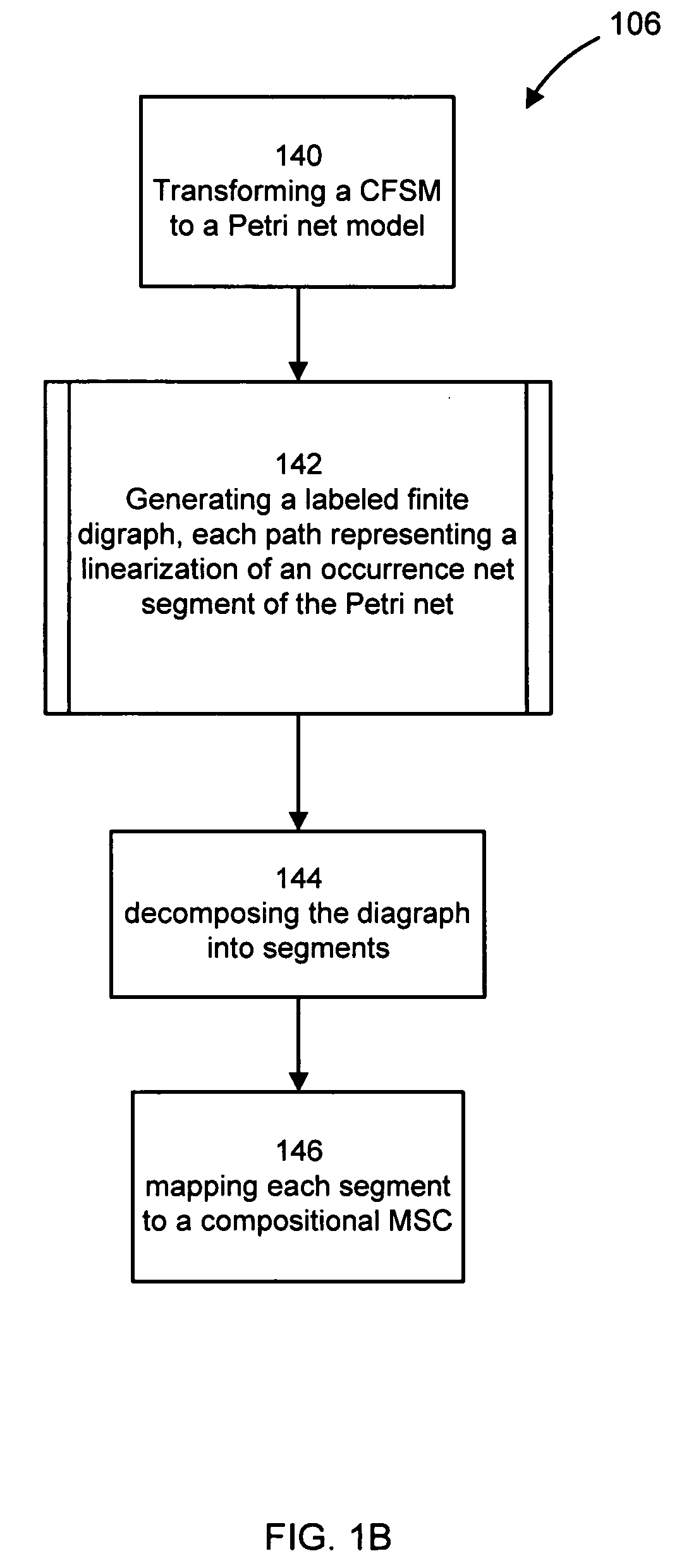Synthesis of Message Sequence Charts from Communicating Finite-State Machines
a message sequence and finite-state machine technology, applied in the field of transformation of state machines to message sequence charts, can solve the problems of only generating sequence diagrams from java sources and not controlling the number of processes of reverse engineering tools, and achieve the effect of quick cycl
- Summary
- Abstract
- Description
- Claims
- Application Information
AI Technical Summary
Benefits of technology
Problems solved by technology
Method used
Image
Examples
Embodiment Construction
[0020]There are two general, complementary views of the dynamic behaviors of a distributed communicating system. One is based on scenarios, which focuses on the flows of message exchanges between communicating entities. The other is based on states, which focuses on the local state evolvement of each entity as a consequence of the communications. Message Sequence Charts (MSCs) and Communicating finite-state Machines (CFSMs) are two popular formalism representing the two views, respectively.
[0021]The embodiments relate to the synthesis of MSCs from CFSMs. FIG. 1A is a diagram of an example MSC-based design flow according to an embodiment of the invention. The flow starts at 100 with a system specification or requirements described by a set of MSCs. Usually, the MSCs constitute a partial description of the desired behaviors. Then, at 102, a set of CFSMs are automatically synthesized from the MSCs. These CFSMs at 104 often contain all the behaviors of the MSCs and some unspecified beha...
PUM
 Login to View More
Login to View More Abstract
Description
Claims
Application Information
 Login to View More
Login to View More - R&D
- Intellectual Property
- Life Sciences
- Materials
- Tech Scout
- Unparalleled Data Quality
- Higher Quality Content
- 60% Fewer Hallucinations
Browse by: Latest US Patents, China's latest patents, Technical Efficacy Thesaurus, Application Domain, Technology Topic, Popular Technical Reports.
© 2025 PatSnap. All rights reserved.Legal|Privacy policy|Modern Slavery Act Transparency Statement|Sitemap|About US| Contact US: help@patsnap.com



